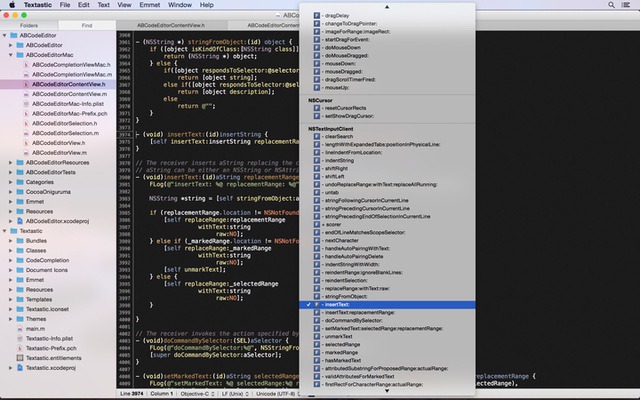
TextMate themes can mark up any scope, at varying levels of precision. This scope tells us that we are looking at a link title within a link within a list within a MediaWiki document. For instance, the title of one of the links in the “External links” section has the scope: These grammars allow nesting rules to be defined using the Oniguruma regular expression library, and then assigned specific “scopes”: compound labels which identify them for coloration.Įach point of a document is assigned one or more scopes, which define where in the document the point is, how it should be colored, and what the behavior of TextMate should be at that point. It uses a modified version of the Apple ASCII property list format to define language grammars. TextMate language grammars allows users to create their own arbitrarily complex syntax highlighting modes by assigning each document keyword a unique name. Odgaard also stated he has a friend who uses some of TextMate's frameworks in a closed-source project, and they could not incorporate patches released under GPL.
#Textmate 2 mac#
Odgaard stated he prefers receiving patches as public domain as this preserves his ability to release a future version under a more permissive license, or to make a version available on the Mac App Store.
#Textmate 2 software#
In August 2012, TextMate 2's source code was published on GitHub under the terms of GPL-3.0-or-later, an attempt by the developer to counteract restrictions Apple placed on software distributed through the Mac App Store. In September 2019, a final version was released.
#Textmate 2 download#
A public alpha was made available for download on the TextMate blog in December 2011, followed by a release candidate at the end of 2016. In June 2009, TextMate 2 was announced as being about 90 percent complete, but with an undisclosed final-feature list. Throughout 2007, the core application changed only minimally, though its “language bundles” continued to advance. On 8 August 2006, TextMate was awarded the Apple Design Award for Best Developer Tool, at Apple's Worldwide Developers Conference in San Francisco, California, to “raucous applause.” In February 2006, the TextMate blog expressed intentions for future directions, including improved project management, with a plug-in system to support remote file systems such as FTP, and revision control systems such as Subversion. TextMate continued to develop through mid-2006. Reviews were positive, in contrast to earlier versions that had been criticised. On 6 January 2006, Odgaard released TextMate 1.5, the first “stable release” since 1.0.2.

#Textmate 2 series#
In the series of TextMate 1.1 betas, TextMate gained features: a preferences window with a GUI for creating and editing themes a status bar with a symbol list menus for choosing language and tab settings, and a “bundle editor” for editing language-specific customizations.

TextMate 1.0.2 came out on 10 December 2004. Even so, some developers found this early and incomplete version of TextMate a welcome change to a market that was considered stagnated by the decade-long dominance of BBEdit. At first only a small number of programming languages were supported, as only a few “language bundles” had been created. The release focused on implementing a small feature set well, and did not have a preference window or a toolbar, didn't integrate FTP, and had no options for printing. TextMate 1.0 was released on 5 October 2004, after 5 months of development, followed by version 1.0.1 on 21 October 2004. TextMate features declarative customizations, tabs for open documents, recordable macros, folding sections, snippets, shell integration, and an extensible bundle system. This was tested with: version 2.0-beta.8.1.TextMate is a general-purpose GUI text editor for macOS created by Allan Odgaard. So if you are looking for a good texteditor and want to remove your typos TM is at this stage not for you. But if spellcheck is your thing: Use any other tool than TM! When using the other method (commando colon) you will see at least something if any word is found. What it does is that it finds the first word, and then focus can not be moved if you use command semicolon.

You have to use the command kolon, you can not use the command and semicolon. When I did an important paper a few months back, I tried to use the spellchecker in TM.

TM is not good if you are trying to spellcheck a document! Since it should use the OS X spellchecker, but something went wrong somewhere. I had to go back to Textedit for one simple reason: It can guess correct text encodings, and that is very nice for me and my workflows.Ģ. TM is great if you are using texteditors all over the world. I tried to use the program as a replacement for Tincta.


 0 kommentar(er)
0 kommentar(er)
